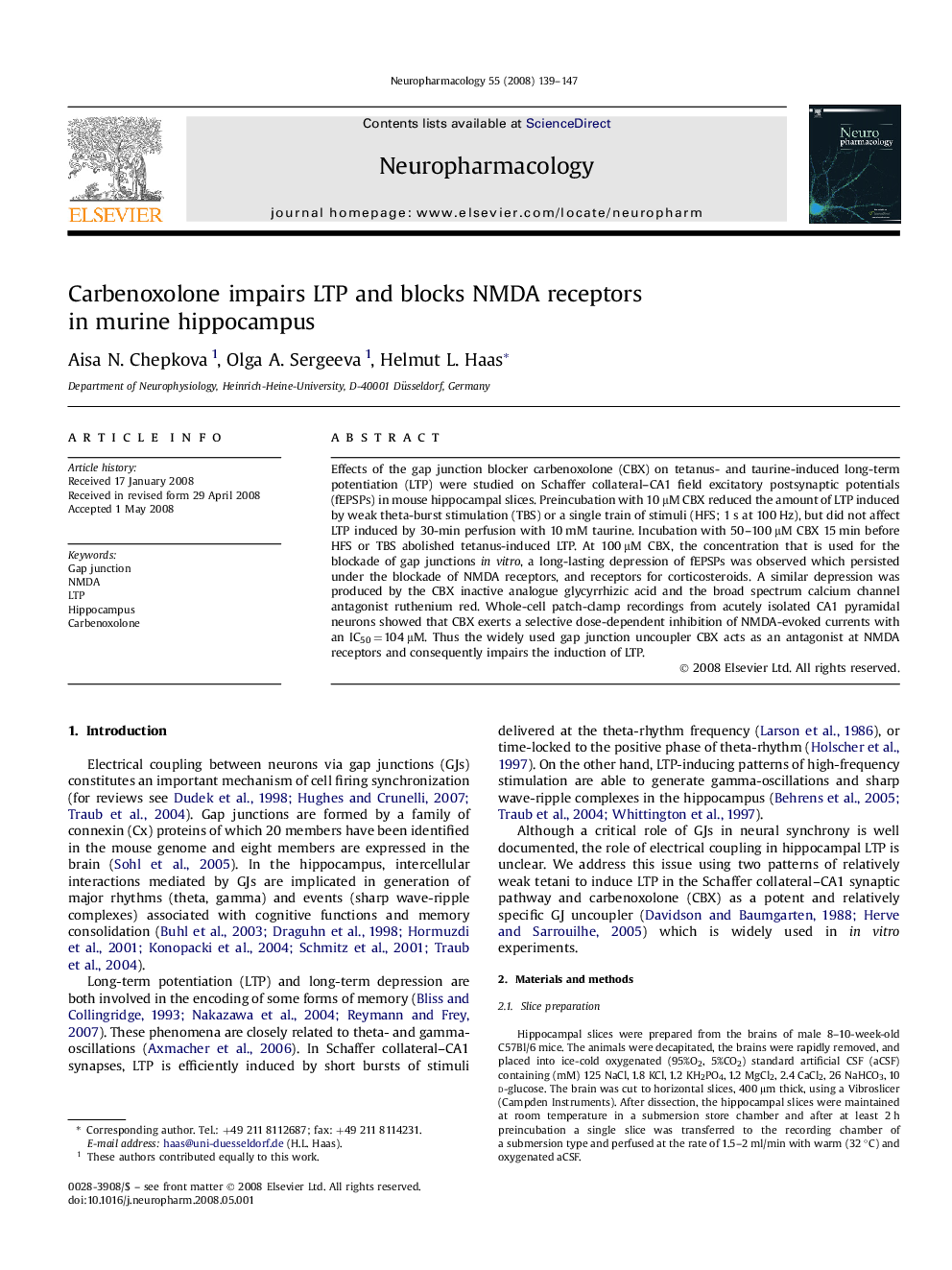| Article ID | Journal | Published Year | Pages | File Type |
|---|---|---|---|---|
| 2494723 | Neuropharmacology | 2008 | 9 Pages |
Effects of the gap junction blocker carbenoxolone (CBX) on tetanus- and taurine-induced long-term potentiation (LTP) were studied on Schaffer collateral–CA1 field excitatory postsynaptic potentials (fEPSPs) in mouse hippocampal slices. Preincubation with 10 μM CBX reduced the amount of LTP induced by weak theta-burst stimulation (TBS) or a single train of stimuli (HFS; 1 s at 100 Hz), but did not affect LTP induced by 30-min perfusion with 10 mM taurine. Incubation with 50–100 μM CBX 15 min before HFS or TBS abolished tetanus-induced LTP. At 100 μM CBX, the concentration that is used for the blockade of gap junctions in vitro, a long-lasting depression of fEPSPs was observed which persisted under the blockade of NMDA receptors, and receptors for corticosteroids. A similar depression was produced by the CBX inactive analogue glycyrrhizic acid and the broad spectrum calcium channel antagonist ruthenium red. Whole-cell patch-clamp recordings from acutely isolated CA1 pyramidal neurons showed that CBX exerts a selective dose-dependent inhibition of NMDA-evoked currents with an IC50 = 104 μM. Thus the widely used gap junction uncoupler CBX acts as an antagonist at NMDA receptors and consequently impairs the induction of LTP.
